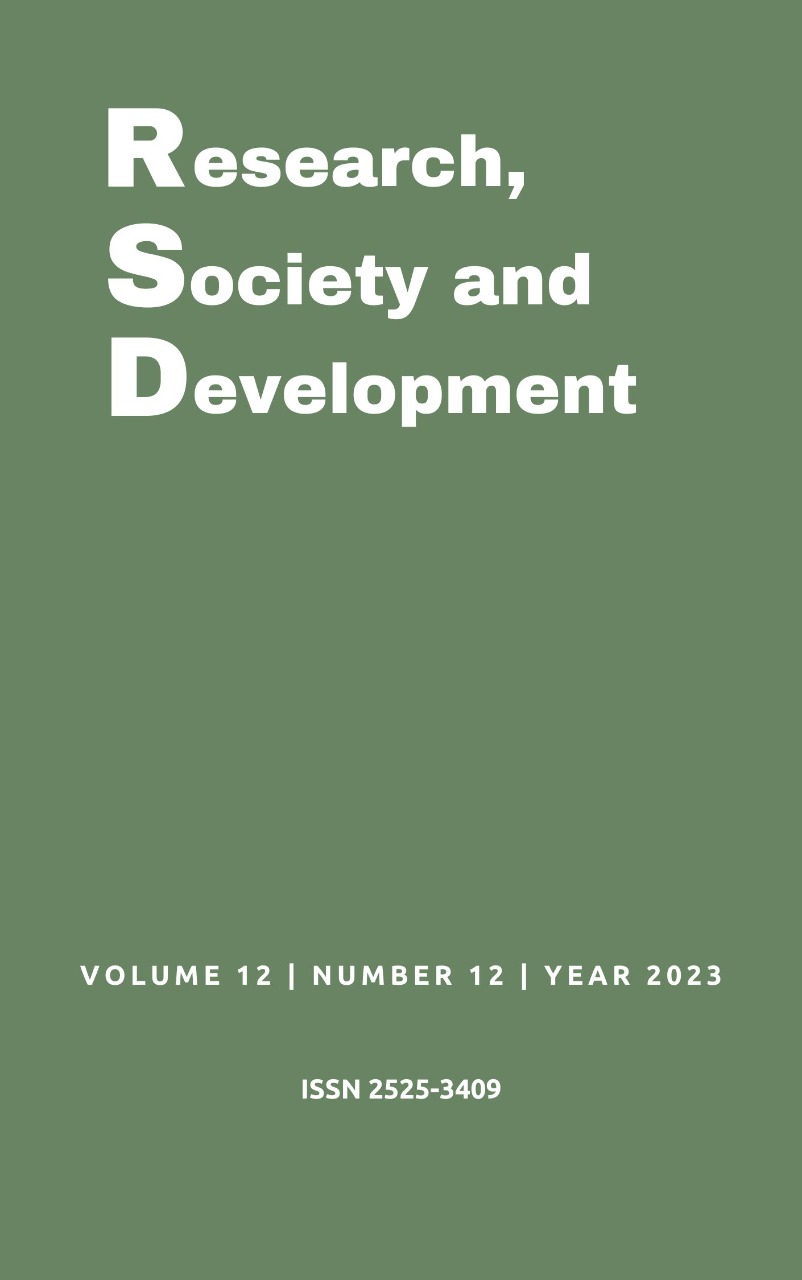Therapeutic botulinum toxin in orofacial harmonization
DOI:
https://doi.org/10.33448/rsd-v12i12.44066Keywords:
Botulinum Toxins, Type A, Facial Pain, Bruxism.Abstract
Orofacial harmonization, a specialty of dentistry, aims to improve facial aesthetics and the function of muscles, bones and soft tissues in the mouth and face region. Botulinum toxin plays an important role in this practice, whether applied surgically or not to alleviate problems such as bruxism and chronic pain. The use of botulinum toxin has gained acceptance in dentistry due to its effectiveness in reducing facial muscle tension. For patients with bruxism, botulinum toxin temporarily paralyzes the chewing muscles, relieving pressure on the teeth and reducing tooth wear. Furthermore, it is useful in treating conditions such as temporomandibular disorder (TMD) and tension migraines, providing relief. However, it is essential that orofacial harmonization professionals have anatomical knowledge and clinical experience in procedures with botulinum toxin to ensure safe results. The practice must follow ethical and legal guidelines for the safety and well-being of patients. The integration of botulinum toxin into dentistry, in the context of orofacial harmonization, represents an innovative approach with the potential to improve the health and quality of life of patients facing painful and dysfunctional facial conditions. Therefore, the objective of this narrative review of the literature is to investigate the association of botulinum toxin as a therapeutic option in the practice of orofacial harmonization.
References
Bort-Martí, A. R., Rowe, F. J., Ruiz Sifre, L., Ng, S. M., Bort-Martí, S. & Ruiz Garcia, V. (2023). Botulinum toxin for the treatment of strabismus. Cochrane Database Syst Rev. 3(3), CD006499.
de Jongh, F. W., Schaeffers, A. W. M. A., Kooreman, Z. E., et al. (2023) Botulinum toxin A treatment in facial palsy synkinesis: a systematic review and meta-analysis. Eur Arch Otorhinolaryngol. 280(4), 1581-1592.
De la Torre Canales, G., Câmara-Souza, M. B., Poluha, R. L., et al. (2022) Long-Term Effects of a Single Application of Botulinum Toxin Type A in Temporomandibular Myofascial Pain Patients: A Controlled Clinical Trial. Toxins (Basel). 14(11), 741.
Do, T. P., Hvedstrup, J., & Schytz, H. W. (2018) Botulinum toxin: A review of the mode of action in migraine. Acta Neurol Scand. 137(5), 442-451.
Dressler, D., Saberi, F. A., & Barbosa, E. R. (2005) Botulinum toxin: mechanisms of action. Arq Neuropsiquiatr. 63(1), 180-185.
Fernández-Núñez, T., Amghar-Maach, S., & Gay-Escoda, C. (2019) Efficacy of botulinum toxin in the treatment of bruxism: Systematic review. Med Oral Patol Oral Cir Bucal. 24(4), e416-e424.
Grippe, T., & Chen, R. (2023) Botulinum toxin in the management of parkinsonian disorders. Toxicon. 232, 107209.
Jadhao, V. A., Lokhande, N., Habbu, S. G., Sewane, S., Dongare, S., & Goyal, N. (2017) Efficacy of botulinum toxin in treating myofascial pain and occlusal force characteristics of masticatory muscles in bruxism. Indian J Dent Res.28(5), 493-497.
Kaya, D. I., & Ataoglu, H. (20210 Botulinum toxin treatment of temporomandibular joint pain in patients with bruxism: A prospective and randomized clinical study. Niger J Clin Pract.24(3), 412-417.
Kaya Keles, C. S., & Ates, F. (2022) Botulinum Toxin Intervention in Cerebral Palsy-Induced Spasticity Management: Projected and Contradictory Effects on Skeletal Muscles. Toxins (Basel).14(11), 772.
Marques, T. M., Suguíhara, R. T., & Muknicka, D. P. (2023). The use of botulinum toxin as an adjunct in the treatment of bruxism. Research, Society and Development, 12(6), e15912642200.
Matak I, Bölcskei K, Bach-Rojecky L, & Helyes Z. (2019) Mechanisms of Botulinum Toxin Type A Action on Pain. Toxins (Basel). 11(8), 459.
Rother, E. T. (2007). Revisão sistemática x revisão narrativa. Acta Paul. Enferm, 20(2).
Safarpour, D., & Jabbari, B. (2023) Botulinum toxin for motor disorders. Handb Clin Neurol. 196, 539-555.
Serrera-Figallo, M. A., Ruiz-de-León-Hernández, G., Torres-Lagares, D., et al. (2020) Use of Botulinum Toxin in Orofacial Clinical Practice. Toxins (Basel). 12(2):112.
Shim, Y. J., Lee, H. J., Park, K. J., Kim, H. T., Hong, I. H., & Kim, S. T. (2020) Botulinum Toxin Therapy for Managing Sleep Bruxism: A Randomized and Placebo-Controlled Trial. Toxins (Basel). 12(3), 168.
Spagna, A., Attal, N. (2023) Botulinum toxin A and neuropathic pain: An update. Toxicon. 232, 107208.
Sumodjo, P. R. P. A., Suguíhara, R. T., & Muknicka, D. P. (2023). Facial aging and orofacial harmonization – a narrative literature review. Research, Society and Development, 12(5), e15312541591.
Teodoro, R. A. de A., Suguíhara, R. T., & Muknicka, D. P. (2023). Aesthetics and the orofacial harmonization. Research, Society and Development, 12(7), e1712742400.
Wollmer, M. A., Magid, M., Kruger, T. H. C., & Finzi, E. (2022) Treatment of Depression with Botulinum Toxin. Toxins (Basel). 14(6), 383.
Downloads
Published
Issue
Section
License
Copyright (c) 2023 Talita Chideroli Martinez Gutierre; Roberto Teruo Suguihara; Daniella Pilon Muknicka

This work is licensed under a Creative Commons Attribution 4.0 International License.
Authors who publish with this journal agree to the following terms:
1) Authors retain copyright and grant the journal right of first publication with the work simultaneously licensed under a Creative Commons Attribution License that allows others to share the work with an acknowledgement of the work's authorship and initial publication in this journal.
2) Authors are able to enter into separate, additional contractual arrangements for the non-exclusive distribution of the journal's published version of the work (e.g., post it to an institutional repository or publish it in a book), with an acknowledgement of its initial publication in this journal.
3) Authors are permitted and encouraged to post their work online (e.g., in institutional repositories or on their website) prior to and during the submission process, as it can lead to productive exchanges, as well as earlier and greater citation of published work.


